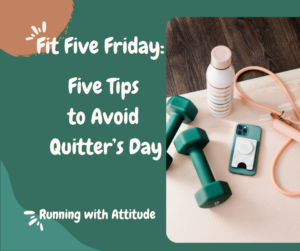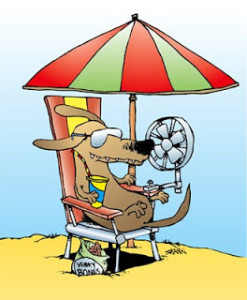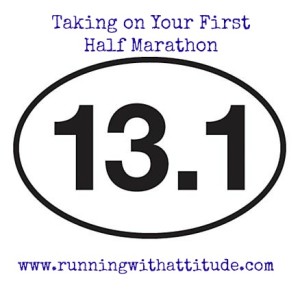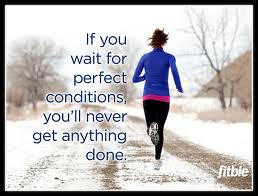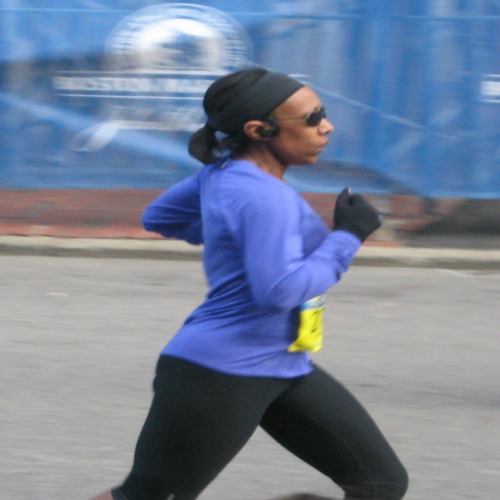Did you know that the second Friday in January has earned the dubious title of “Quitter’s Day”? According to various research, by the second Friday in January, between 70-80% of people who make resolutions have started to give up on them.
Of course, with the right mindset and strategies, you can keep your fitness goals alive all year long. For this week’s Fit Five Friday, here are five tips to help you stick with your goals and avoid Quitter’s Day.
Fit Five Friday: Five Tips to Avoid Quitter’s Day
Set Realistic Goals
While a goal should stretch you beyond your comfort zone, if the goal is too much of a reach it could backfire when you struggle to make progress. It’s fine to “go big” with your goals but be sure to build in smaller goals along the way so you have some wins along the way. Success breeds motivation!
Make It Personal
Your goals should reflect your interests – not what others are doing. Whether it’s running, yoga, weightlifting, or dance, pick something you enjoy. If you’re chasing a goal because others are doing it/have done it and you feel like you “should” then you’re not setting yourself up for success.
Find Your Why
So what is your Why? When chasing your goals gets tough you need to remember why you’re doing this – Is it to feel stronger, have more energy, clock that PR, or set an example for your kids? When motivation wanes (and it will!), reconnecting with your “why” can give you the push you need to keep going.
Make a Plan
Dreams need structure! Map out your workouts for the week and schedule them like you would any important appointment. When you’re facing multiple demands on your time (work, family, and other personal commitments), it can be tough to find time for your workouts. Scheduling your workouts as you would any other meeting or obligation is key to ensuring that you have the time you need to make consistent progress toward your goals.
Celebrate Progress, Not Perfection
Fitness is a journey, not a destination. Celebrate every win, no matter how small—whether it’s showing up for a workout, hitting a personal best, or simply feeling better. Recognizing progress helps build momentum and keeps you inspired to continue.
How do you make sure you stay on track with your goals?
Welcome to Fit Five Friday!
Join My First 5K and More, Running With Attitude, Run Laugh Eat Pie, Runs with Pugs, and The Running Techer every Friday for Fit Five Friday! Share your fitness-related link, link back to your hosts, and please share the link love by visiting and commenting on your hosts and at least two other Fit Five Friday bloggers!

